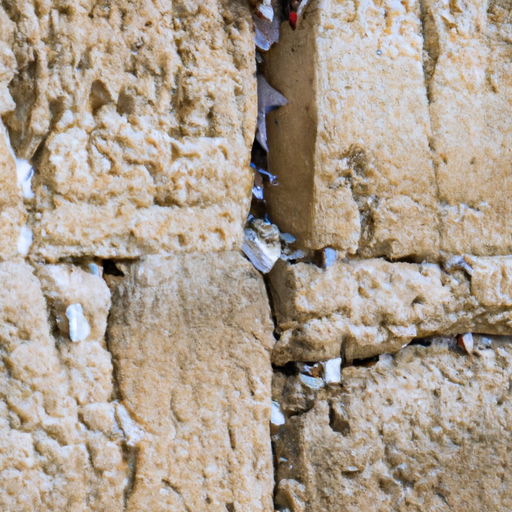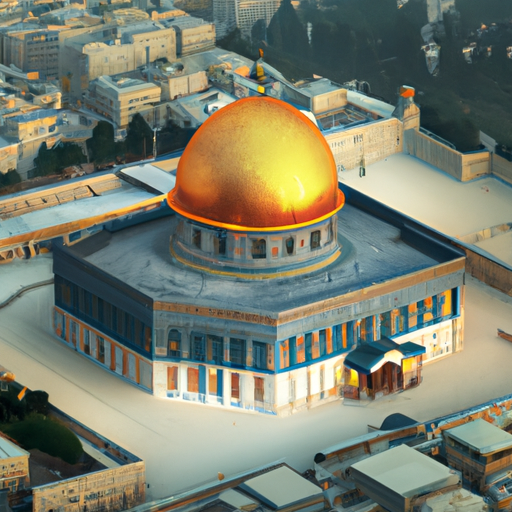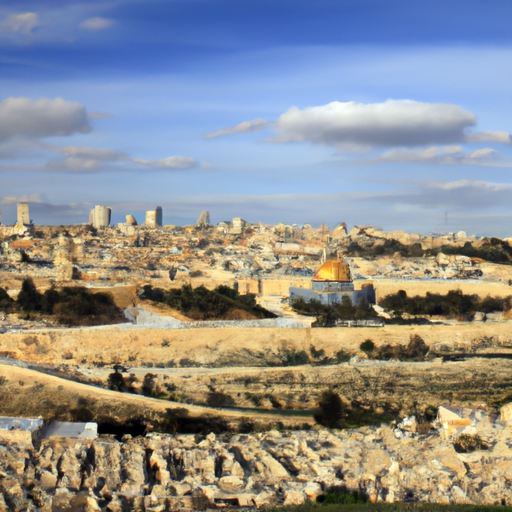Jerusalem, a city steeped in religious significance and rich history, is home to some of the most important pilgrimage sites for three of the world's major religions: Judaism, Christianity, and Islam. In this blog post, we will explore some of these renowned holy places, their historical context, and their enduring allure for millions of pilgrims worldwide.
1. 'The Western Wall': An Eternal Symbol of Jewish Faith?
The Western Wall, also known as the Wailing Wall, stands as an iconic and revered site in Jerusalem. It holds immense significance for the Jewish people, symbolizing their deep connection to the land of Israel and their faith in God. As one of the last remaining remnants of the Second Temple, destroyed in 70 CE, the Western Wall is a tangible link to the ancient Jewish heritage.
Visiting the Western Wall is more than just a tourist attraction; it is a spiritual experience. People from all walks of life come to this sacred site to pray, reflect, and leave handwritten notes in the cracks of the wall. This act of placing personal prayers and wishes within the crevices is believed to bring them closer to God. The atmosphere is filled with reverence and devotion, as individuals sway back and forth in prayer or touch the wall with their hands, heads, or prayer books.
The Western Wall Plaza, where the wall is located, is a bustling hub of activity. It is a place where people come together to celebrate significant events, such as bar mitzvahs and weddings. The sight of young boys donning traditional prayer shawls and reciting prayers with passion is a testament to the continuity of Jewish faith and tradition.

1. A close-up view of the Western Wall with numerous prayer notes tucked into the crevices.
2. 'The Church of the Holy Sepulchre': Where History and Divinity Intersect
The Church of the Holy Sepulcher stands as a testament to the intertwining of history and divinity in Jerusalem. This ancient church is believed to be the site of Jesus Christ's crucifixion, burial, and resurrection, making it the holiest place in Christianity. Stepping foot inside this sacred space is like stepping back in time, as it holds layers upon layers of history spanning centuries.
As you enter the church, you are immediately struck by the grandeur of the architecture and the ornate details adorning every corner. The atmosphere is filled with a sense of awe and reverence, as pilgrims and visitors from around the world gather to pay their respects and seek spiritual solace. The sound of prayers being whispered and hymns being sung creates a hauntingly beautiful ambiance.
One of the most significant sites within the church is the Stone of Anointing, where tradition holds that Jesus' body was prepared for burial. Pilgrims often kneel before this stone, touching it with reverence and offering their prayers. The nearby Aedicule, a small chapel encasing the tomb of Jesus, is another focal point of devotion and pilgrimage. It is here that the faithful come to reflect on the resurrection and experience a profound connection to their faith.
But the Church of the Holy Sepulcher is not just a place of worship; it is also a symbol of unity among different Christian denominations. Despite occasional tensions, representatives from various branches of Christianity coexist within the church, each safeguarding their own sacred spaces while sharing in the common reverence for the site's significance.
As there is so much to see best to take a nice hotel in Jerusalem.
3. 'The Al-Aqsa Mosque': An Islamic Gem Amidst Jerusalem's Skyline
The Al-Aqsa Mosque, nestled within the Old City of Jerusalem, is a revered Islamic site that holds immense significance for Muslims around the world. With its striking golden dome and sprawling courtyard, the mosque stands as a prominent gem amidst Jerusalem's skyline.
- 1. A Historical and Spiritual Legacy:
Dating back to the 7th century, the Al-Aqsa Mosque is the third holiest site in Islam, after Mecca and Medina. It is believed to be the place from which the Prophet Muhammad ascended to heaven during the Night Journey. For Muslims, visiting the Al-Aqsa Mosque is not just a religious obligation but also an opportunity to connect with their faith and seek spiritual solace. - 2. Architectural Marvels:
The mosque's architectural beauty is a testament to the skill and craftsmanship of its builders. The grand entrance, known as the Bab al-Magharibah, welcomes visitors with intricate designs and detailed carvings. The prayer hall, adorned with mesmerizing geometric patterns and ornate decorations, offers a serene space for worship. The golden dome, a symbol of the mosque's prominence, shines brightly against the backdrop of the city, adding to its allure.3. A Site of Unity and Contention:
The Al-Aqsa Mosque is not only a place of worship but also a symbol of unity and contention. It is located within the compound known as Haram al-Sharif or the Temple Mount, which is also significant to Jews and Christians. This shared sacred space has often been a source of tension and conflict. However, it also represents the potential for interfaith dialogue and understanding.

3. An aerial view of the Al-Aqsa Mosque showing its magnificent golden dome and surrounding structures.
4. 'Mount of Olives': A Panoramic View of Faith and History?
The Mount of Olives stands as a picturesque hill located to the east of the Old City of Jerusalem. With its breathtaking views and significant religious sites, it offers visitors a panoramic view of faith and history.
Ascending the Mount of Olives, one is greeted with a mesmerizing vista of the ancient city below. From this vantage point, the Dome of the Rock, the Church of the Holy Sepulchre, and the Al-Aqsa Mosque can all be seen, representing the interconnectedness of different religions and their sacred spaces. The hill itself holds religious significance in Christianity, Judaism, and Islam, making it a site of great spiritual importance.
For Christians, the Mount of Olives is associated with several key events in the life of Jesus. It is believed to be the location where Jesus ascended to heaven after his resurrection, known as the Ascension. Additionally, the hill is home to the Garden of Gethsemane, where Jesus is said to have prayed before his crucifixion.
In Judaism, the Mount of Olives is considered a sacred burial ground. The hillside is adorned with countless ancient tombs and graves, including those of prominent biblical figures such as Zechariah and Absalom. It is believed that the resurrection of the dead will begin here when the Messiah comes.
Whether you are a person of faith or a lover of history and culture, Jerusalem's myriad pilgrimage sites offer an unparalleled journey into millennia of spiritual tradition and human endeavour. The city's profound historical narratives and its vibrant present make it a compelling destination for any traveler. So, when are you embarking on your spiritual journey to Jerusalem?
For more info of tours in Jerusalem please read further.


